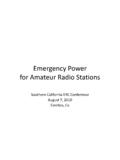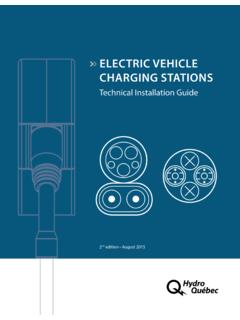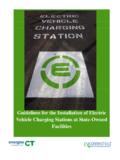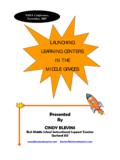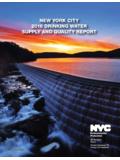Transcription of The Forty Eight-Ninety Six Work Schedule - 48 …
1 The Forty Eight-Ninety Six work Schedule A Feasibility Study Prepared for the Members of Firefighters Local 522 Prepared by Engineer/Paramedic Maurice Johnson Captain Mark Repetto Captain/Paramedic Barbie Law Engineer/Paramedic Tracey Valentine Researched by: (48/96 Committee Members) Captain Frank Miranda, Engineer Patrick Callahan, Engineer Chris Nelson, Firefighter Lindie Thomas, Firefighter Jamie Poole, Firefighter Ty Bailey, Firefighter Jon Rudnicki August 2006 2 This document has been amended to reflect the Committees work since being presented to Senior Staff and the General Membership. Any changes are highlighted in yellow. The following pages have changes to them: Page(s) 3, 12, 19, and 20 3 TABLE OF CONTENTS The table of contents is active and by clicking any of the subject headings, you will be taken directly to that page. INTRODUCTION .. 4 THE 48/96 AND THE FIRE SERVICE.
2 5 WHAT IS A 48-96 work Schedule ? .. 6 NOTHING BUT THE FACTS .. 7 FIRE AGENCIES CURRENTELY OPERATING ON THE 48/96 work Schedule .. 8 48/96 FIRE DEPARTMENTS COMPARED TO METRO FIRE .. 8 WHAT ARE THE BENEFITS TO CHANGING TO A 48-96? .. 9 WHAT ARE THE NEGATIVE ASPECTS OF THE 48/96 Schedule ? .. 10 VACATIONS SELECTION .. 10 Christmas Schedule Switch .. 11 STAFFING .. 12 SICK LEAVE AND THE 48/96 Schedule .. 13 DIVISION COMMENTS .. 14 Fire Chief .. 14 EMS .. 14 Fire Prevention & Investigations .. 14 Training .. 15 Risk Management/Safety/Fitness .. 15 Staffing .. 16 Logistics .. 16 Fleet Maintenance .. 16 Human Resources .. 16 Human Resources .. 16 LINE PERSONNEL QUESTIONS/CONCERNS & COMMITTEES ANSWERS . 17 HEALTH EFFECTS .. 17 ADDITIONAL FINDINGS .. 18 VOTING PROCESS .. 19 No More Clause .. 19 No More Clause .. 19 What does a YES vote mean? .. 19 What does a NO vote mean? .. 19 ESCAPE CLAUSE .. 19 CONCLUSION: .. 19 RECCOMENDATION.
3 20 4 Introduction In April of 2006 an ad hoc committee comprised of members from the Firefighters Local 522 was convened to research the feasibility, benefits, and challenges of the 48/96 work Schedule . The committee is comprised of thirteen members, including captains, engineers, firefighters, and firefighter paramedics. Members of the committee have between 2 and 20 years of service with Metro Fire. The committee also represents a cross-section of personnel from busy and slow stations and both with and without medic units. The committee is led by Engineer/Paramedic Maurice Johnson. The committee met 14 times, deliberating this issue for 70 hours. Individual committee members also spent countless hours of researching items, contacting other Fire Agencies, verifying data, compiling data, preparing presentations, and document development.
4 This study shall accomplish the following: Clearly define the 48/96 work Schedule Trace its history in the Fire Service Explain how it functions Compare it to the current Metro Fire work Schedule Outline the benefits & drawbacks Identify and address any potential challenges Unlike any committees before, we were challenged with the unique task of developing a proposal based on the above-mentioned goals. The committee had to come to a consensus on these items. While that in itself doesn t seem difficult, please consider the fact that not all committee members shared the same support for the Schedule . The committee did, however share the common goal of ensuring that the Membership and Administration would be well educated on the 48/96 work Schedule and that all information within this document is fair, balanced, truthful, and verifiable. In the course of its research, this committee gathered information from many Fire Agencies across the country currently using and/or studying this Schedule .
5 Members are encouraged to study the accompanying material and decide for themselves if the 48/96 work Schedule is right for them individually, and for the membership as a whole. This committee is now submitting its findings. 5 The 48/96 and the Fire Service According to a study conducted by San Jose Firefighters Local 230, the 48/96 work Schedule has been used by professional fire agencies since the early 1990 Since 1998, over two dozen departments switched to this Schedule as a means of relief from long commutes, but also to improve morale by providing more four days , and more weekends off. As seen on the attached users list, this Schedule is not a theoretical experiment in the fire service, but a proven and valid Schedule option. The Departments using the Schedule are diverse in their demographics, management structure, and overall philosophies.
6 Most departments that considered the Schedule first voted for a six-month or one year trial period. In all cases, an escape clause was added to the agreement to allow labor or management to opt out of the trial period at anytime. This committee does not recommend a trial period unless it includes such an escape clause. 1 See Report A- 48/96 work Schedule : Special Report to San Jose Firefighters Local 230 6 What is a 48/96 work Schedule ? A 48/96 work Schedule is simply this: each platoon works two consecutive twenty-four (24) hour shifts, for a total of Forty - eight (48) hours (tour). Immediately following one (1) tour that platoon would have ninety -six (96) hours off before repeating another pattern of two (2) days on, four (4) days off. One shift is still considered to be 24 hours. If a firefighter takes a day off, he/she uses 24 hours of vacation leave, and works the remaining 24-hour shift.
7 Personnel would still be allowed to take time off in partial shifts. For example, if a firefighter takes the first half of his/her first shift off, he/she comes in that evening and works out the remaining 36 hours of the tour. Example: This six-day rotation would replace the current 9-day rotation used by our district. The total number of hours worked per month and per year remains the same. SundayMondayTuesdayWednesdayThursdayFrid aySaturday123456789101112131415161718192 02122232425262728293031 KellySundayMondayTuesdayWednesdayThursda yFridaySaturday1234567891011121314151617 181920212223242526272829303148/96 7 Nothing but the Facts We work the same number of days with the Metro work Schedule and the 48/ 96 work Schedule o 56 hours per week o 10 days per month o 120 days per year Tours falling on both Christmas Eve and Christmas day o The 24th could be swapped for the 26th o This occurs 10 times in 21 years o The first incident occurs in 2009 4 Days off duty o 40 per year on the Metro Schedule o 60 per year on the 48/96 work Schedule Full Weekends off duty o 17 weekends off per year on the Metro Schedule o 26 weekends off per year on the 48/96 work Schedule Full Weekends on duty o 0 complete weekends worked on the Metro Schedule o 9 complete weekends worked per
8 Year on the 48/96 work Schedule Commute Days o 240 commute days per year on the Metro Schedule o 120 commute days per year on the 48/96 work Schedule Commute Summary o Mileage to work will be cut in half o Less wear and tear on your vehicle o Less time driving o Reduction in your fuel bill o Reduction in air pollution 8 Fire Agencies Currently Operating on the 48/96 work Schedule At least 80 departments have switched to the 48/96 work Schedule or are in the midst of a trial Many more departments are reportedly now conducting feasibility studies of the 48/96 work Schedule . 48/96 Fire Departments Compared to Metro Fire The Departments using the Schedule are diverse in their demographics, management structure, and overall philosophies, however; no other Department with comparable medic unit hour utilization (UHU) or call volume are utilizing the 48/96 work Schedule .
9 Sacramento Metro Fire has 42 stations, protects a population of 600,000, provides ALS and transport services, and responds to over 60,000 calls a year. Ten of Metro Fire's 42 stations run between 300 and 650 calls a month. This equates to between 10 and 22 runs per Albuquerque Fire has 21 stations, protects a population of 625,000, provides ALS services with limited transport responsibility, and responds to over 50,000 calls a year. Six of Albuquerque s 21 stations run between 350 and 500 calls a month4. The City of San Bernardino Fire Department has 12 fire stations, protects a population of 180,000 and responds to over 18,200 calls a year. Three of San Bernardino s stations run between 350 and 500 calls a West Metro Fire-(Colorado) has 15 fire stations, protects a population of 265,000, and responds to over 20,000 calls a year.
10 West Metro staffs 8 transporting medic units, 3 of which run between 200 and 250 calls per month. 6 Elk Grove CSD has 6 stations, protects a population of 112,000, provides ALS and transporting services and responds to over 8,000 calls per year. 7 Folsom Fire Department has 4 stations, protects a population of 52,000, provides ALS and transporting services and responds to over 5,400 calls per year 3,600 of which are EMS related. 8 Five (5) Metro Fire Medic Units respond to 3600 or more EMS related incidents per year. 2 See Attachment A for a complete list of departments utilizing the 48/96 work Schedule . 3 See Attachment B- Metro Fire Department Fact Sheet & 2005 Run Stats 4 See Attachment C- Albuquerque Fire Department Fact Sheet 5 See Attachment D- San Bernardino City Fire Department Fact Sheet 6 See Attachment K- West Metro Fire Department Fact Sheet 7 See Attachment E- Elk Grove Community Services District Fire Department Fact Sheet 8 See Attachment F- Folsom Fire Department Fact Sheet 9 What are the benefits to changing to a 48/96?


